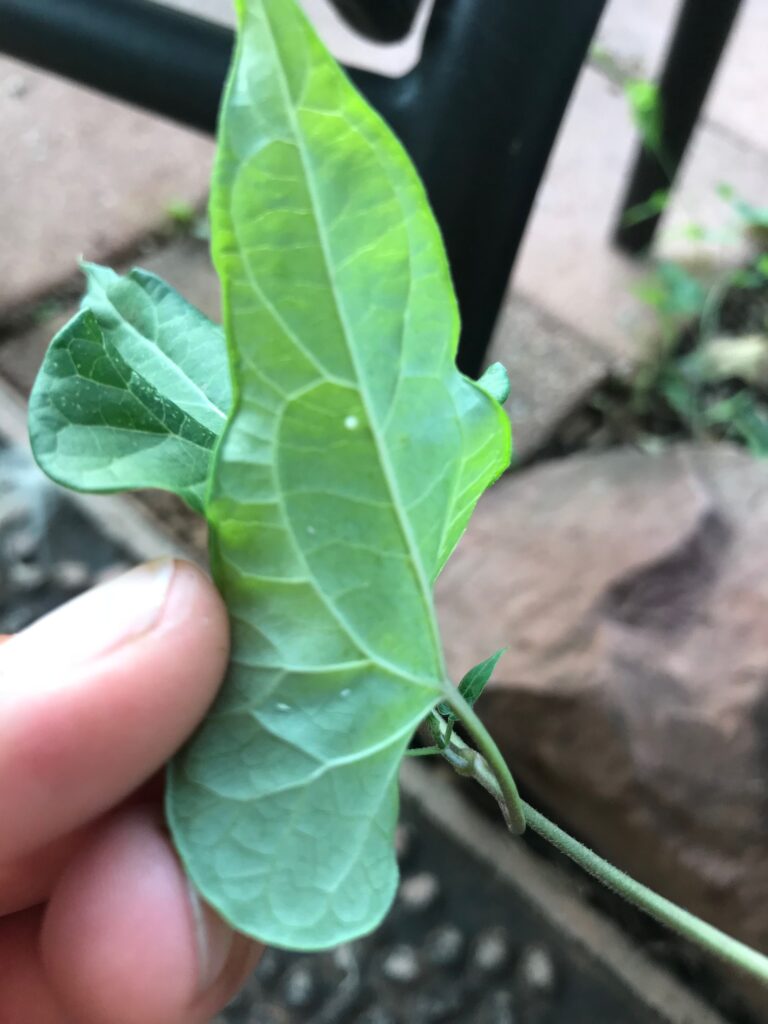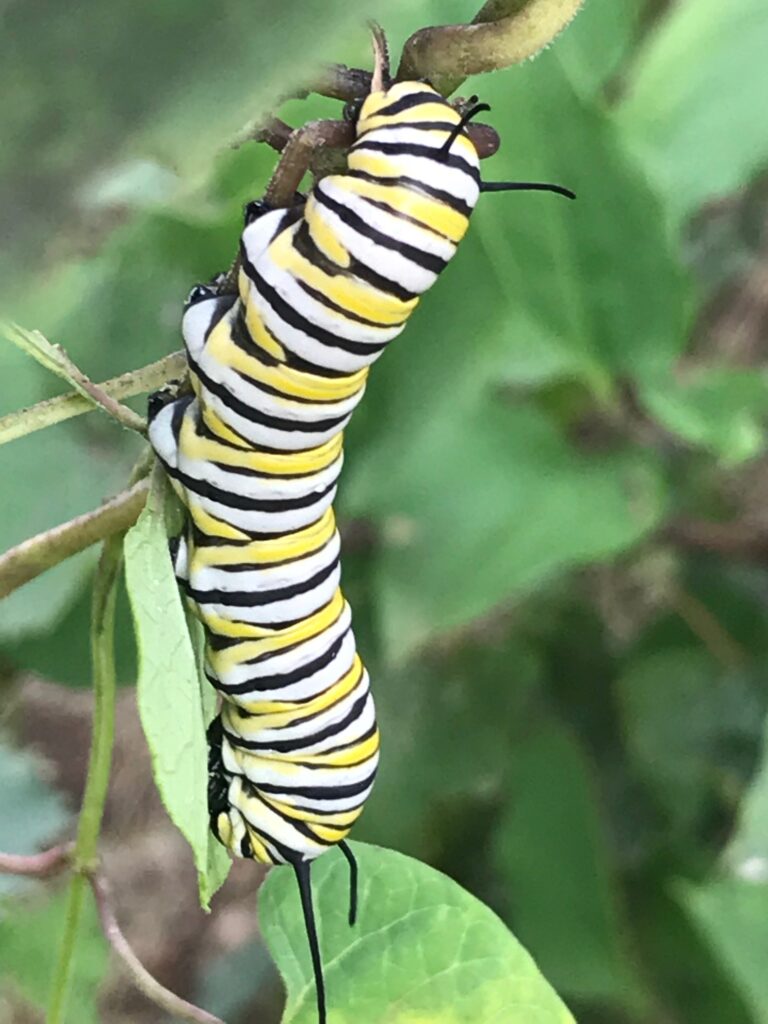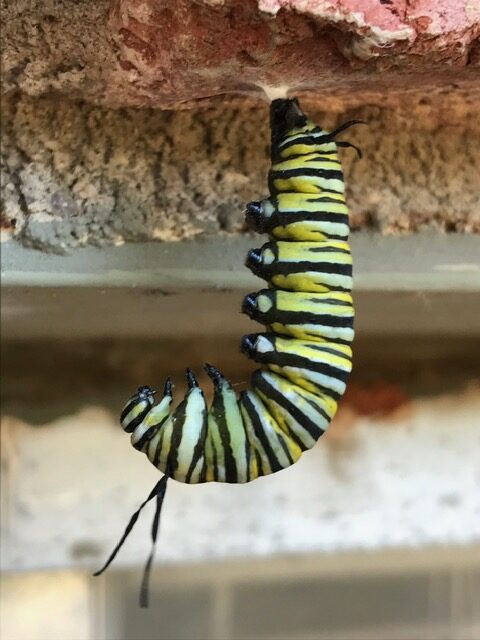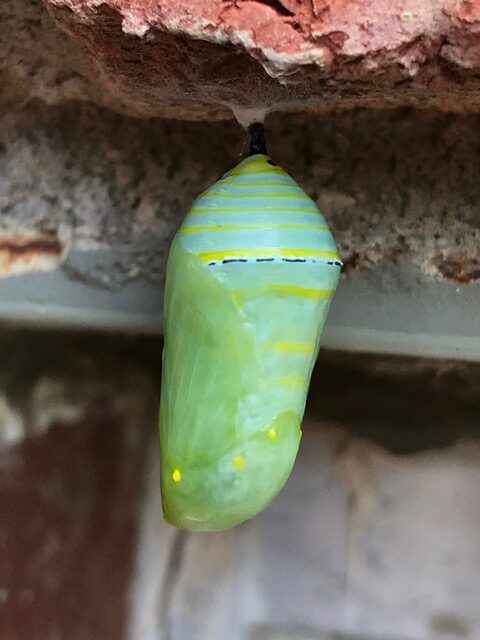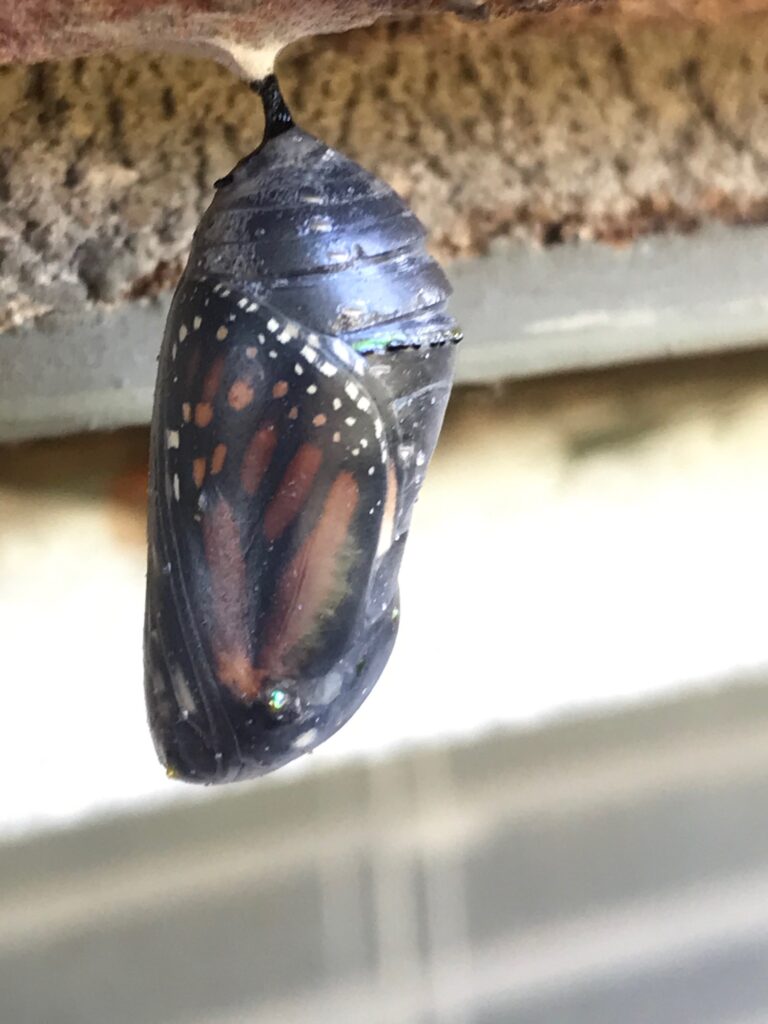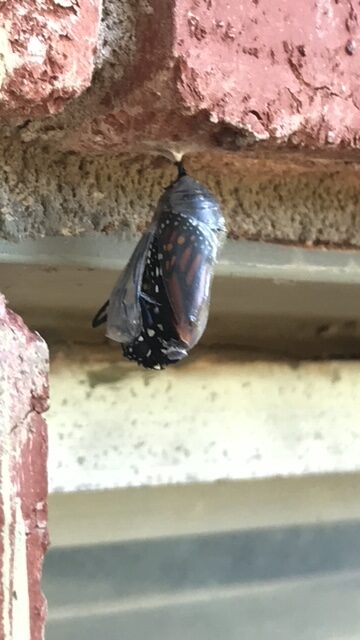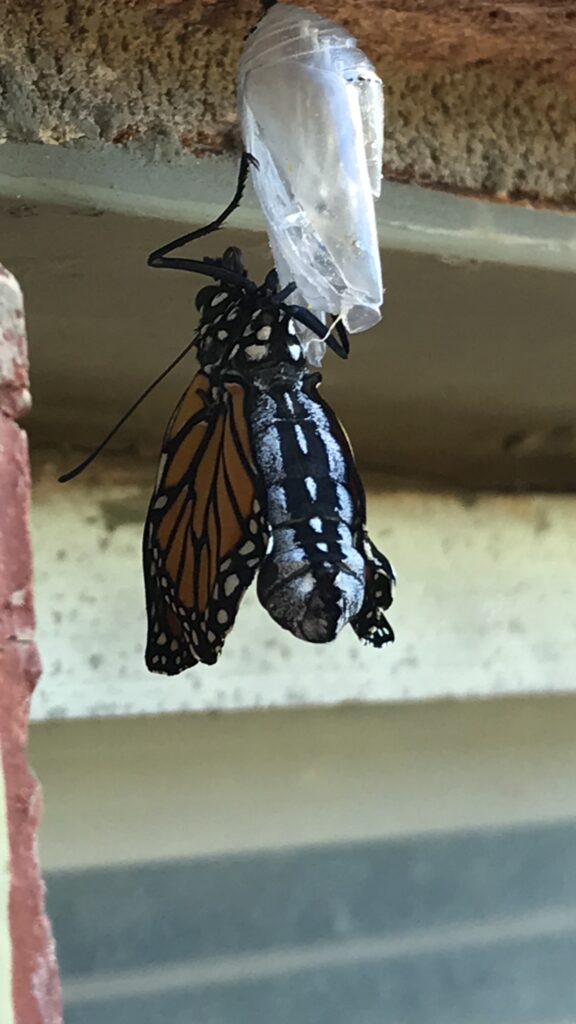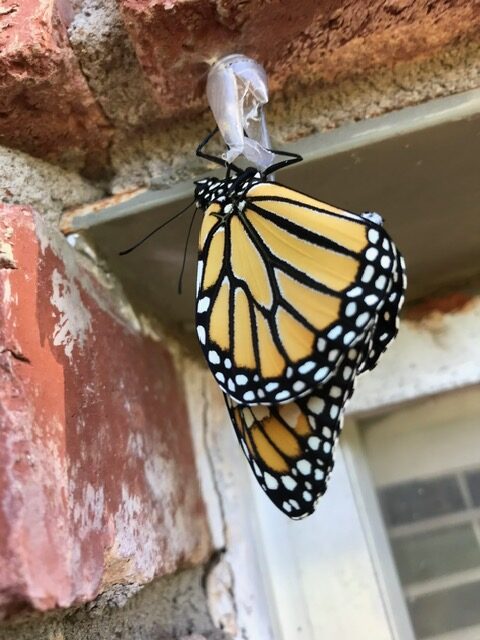The monarch butterfly can be easily confused with other, similar looking species. This guide can serve as a reference to distinguish between monarchs and monarch look-alikes, as well as identifying monarchs in their various stages and how to tell a female from a male monarch.
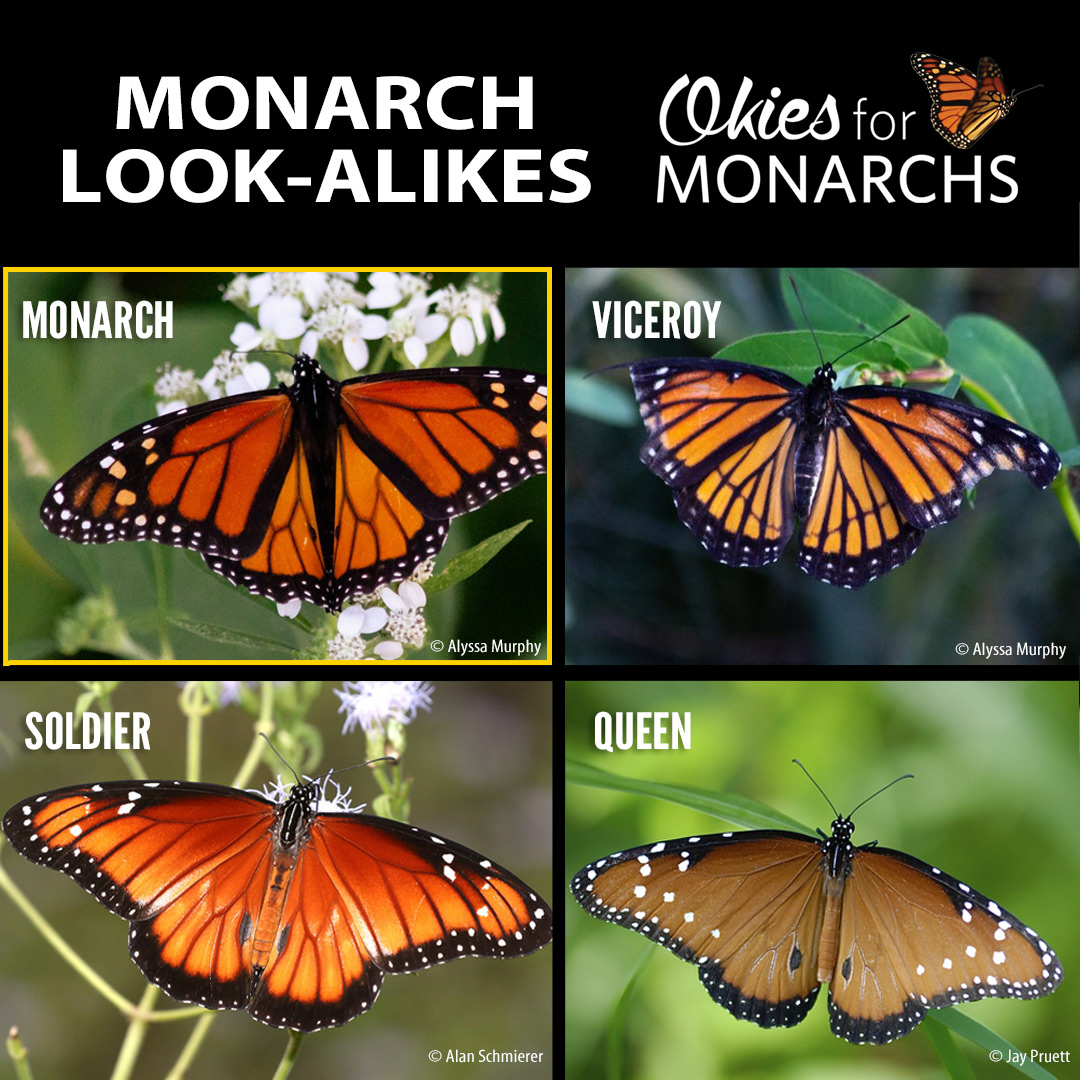
Monarch adults, larvae, and pupae are fairly distinct, but you may also come across several closely related species or monarch mimics, including the queen butterfly (Danaus gilippus), soldier butterfly (Danaus eresimus), and the viceroy (Limenitis archippus). Both queens and soldiers also use milkweeds as host plants, but the larvae of the viceroy do not (and they look very different from monarch larvae).
- Viceroy - Note the distinct black lines that are perpendicular to the other black lines on the adult’s hindwings (it almost looks like a big smile has been drawn across its wings!). The caterpillars are very distinct and look nothing like monarch caterpillars. You likely won’t find them on milkweed, either.
- Soldier - Similar to queen butterflies, soldier adults have fainter black lines on their wings than monarchs, are a darker orange color overall, and have white spots on their forewings.
- Queen - Adults have fainter black lines on their wings than monarchs, are a darker orange color overall, and have white spots on their forewings. The caterpillars are somewhat similar to monarch caterpillars, but they have an the extra set of antennae halfway down the body (for a total of three pairs, opposed to the monarch’s two).
Monarch
Monarch adults have relatively dark black lines on the upper sides of their wings compared to queens and soldiers. Their caterpillars are distinct from those of queens and soldiers by having only two sets of antennae, rather than three.
Female VS Male Monarch Butterflies
- Males have a small black spot on the top surface of the hind wing. Females do not. You can see the spot when the wings are open; sometimes it's faintly visible when the wings are closed, too.
- Males also have slightly thinner wing veins.
- Although not evident in these pictures:
- females tend to be slightly darker than males.
- the tip of the abdomen of the male and female are visibly different.
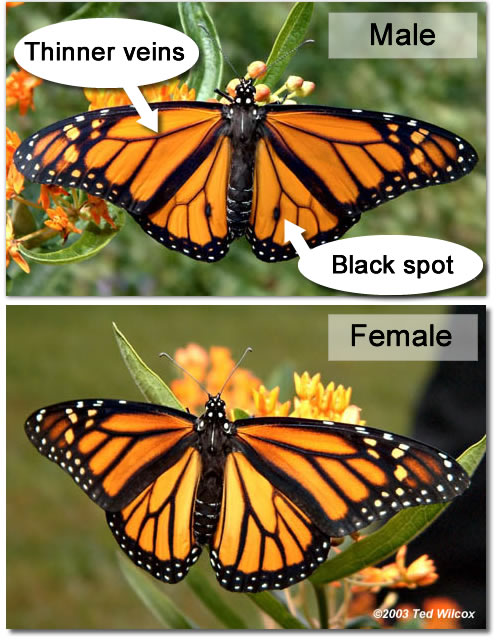
Ready to Get Your Hands Dirty?
Now it's time to pick out which colorful plants and flowers to add to your garden... Let the fun begin!

